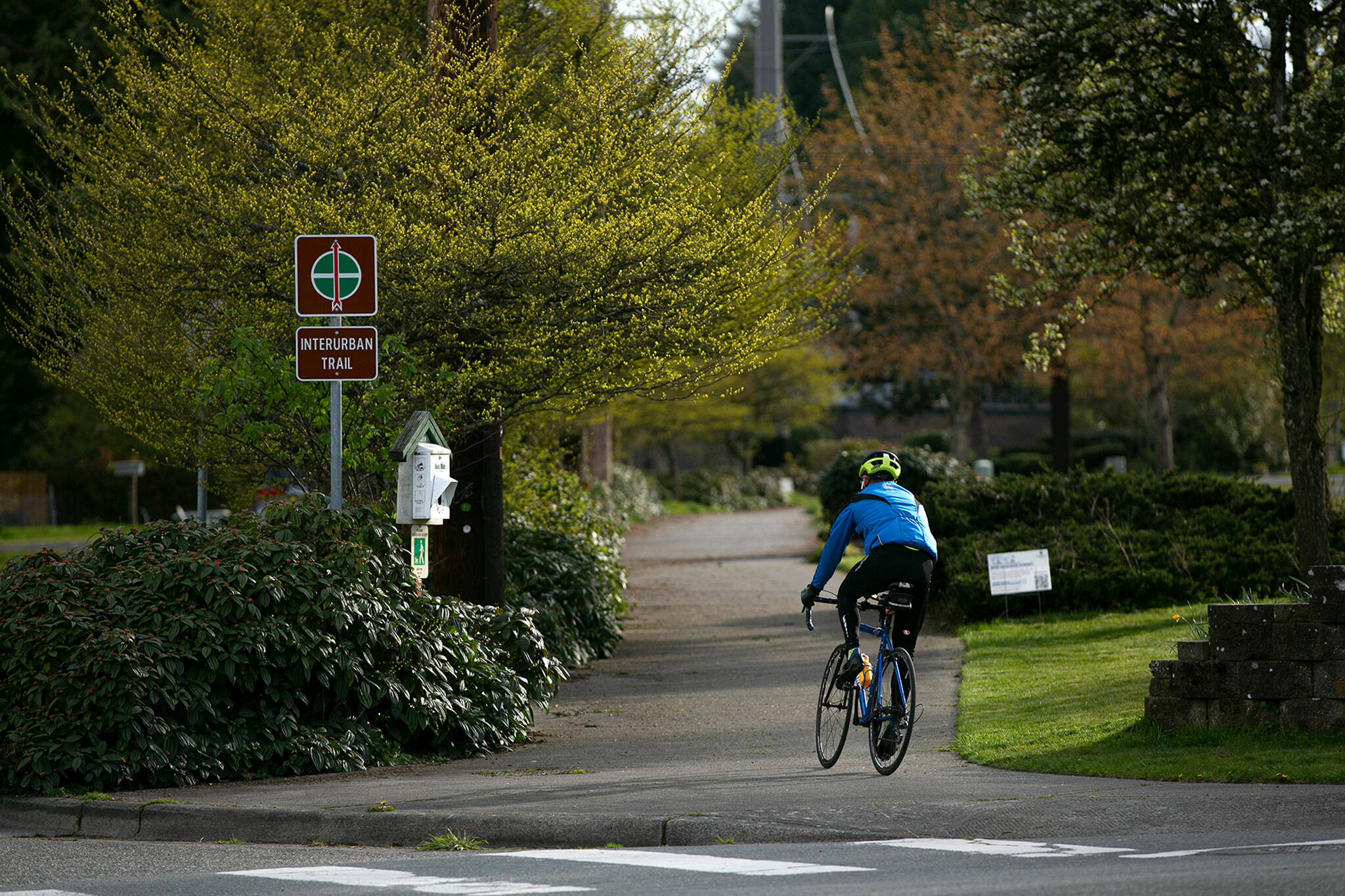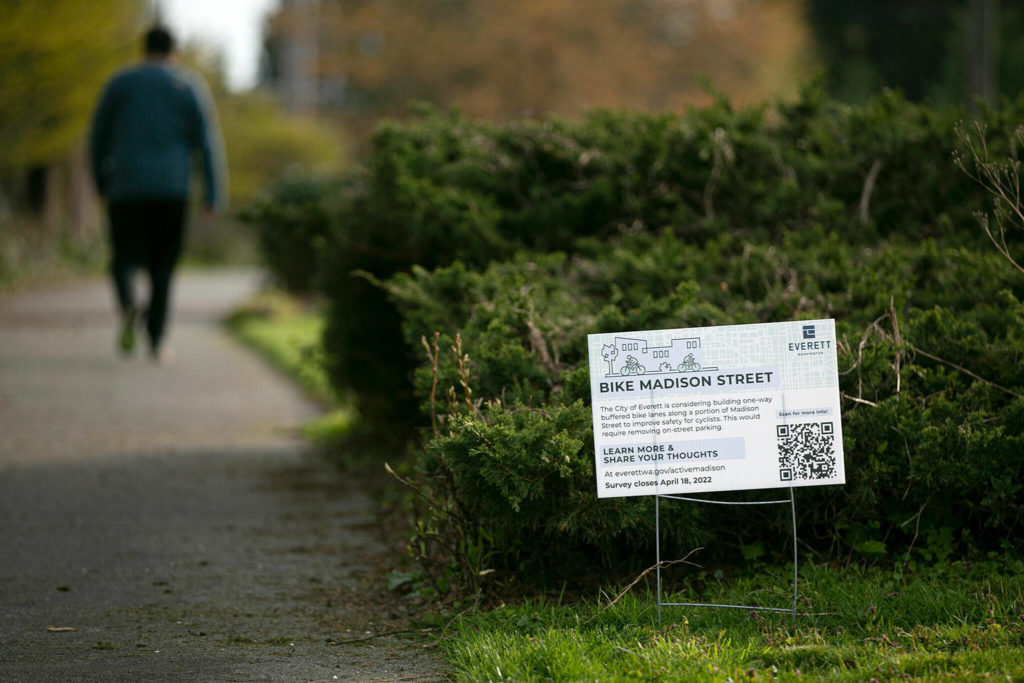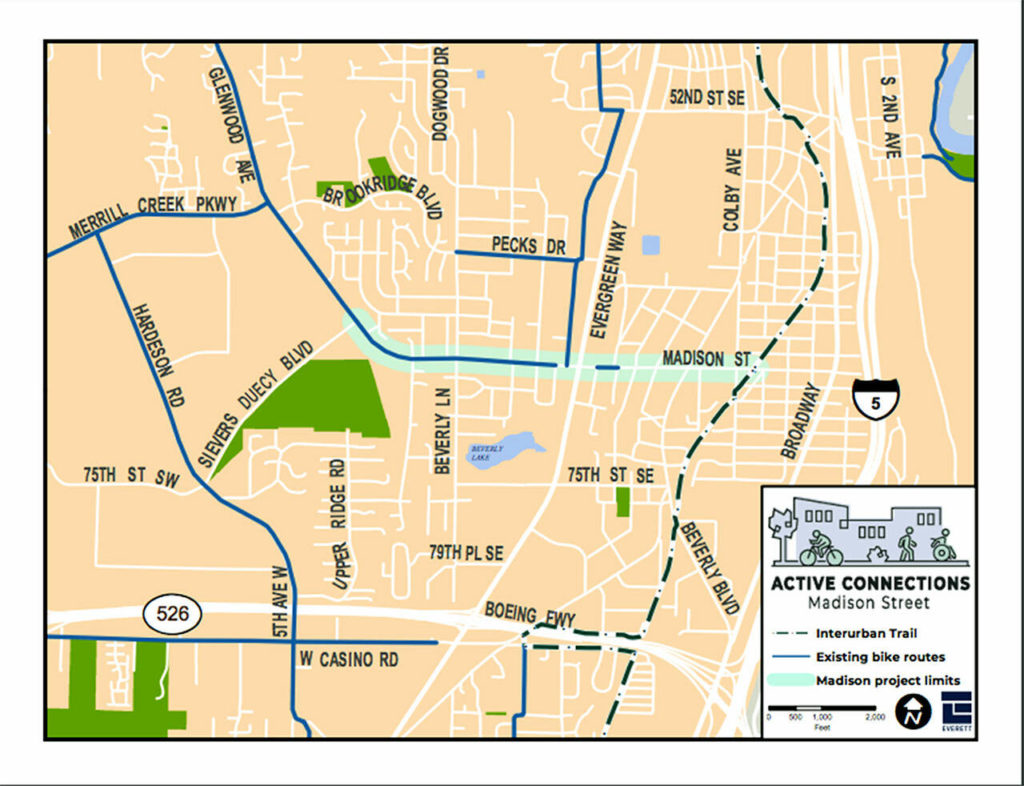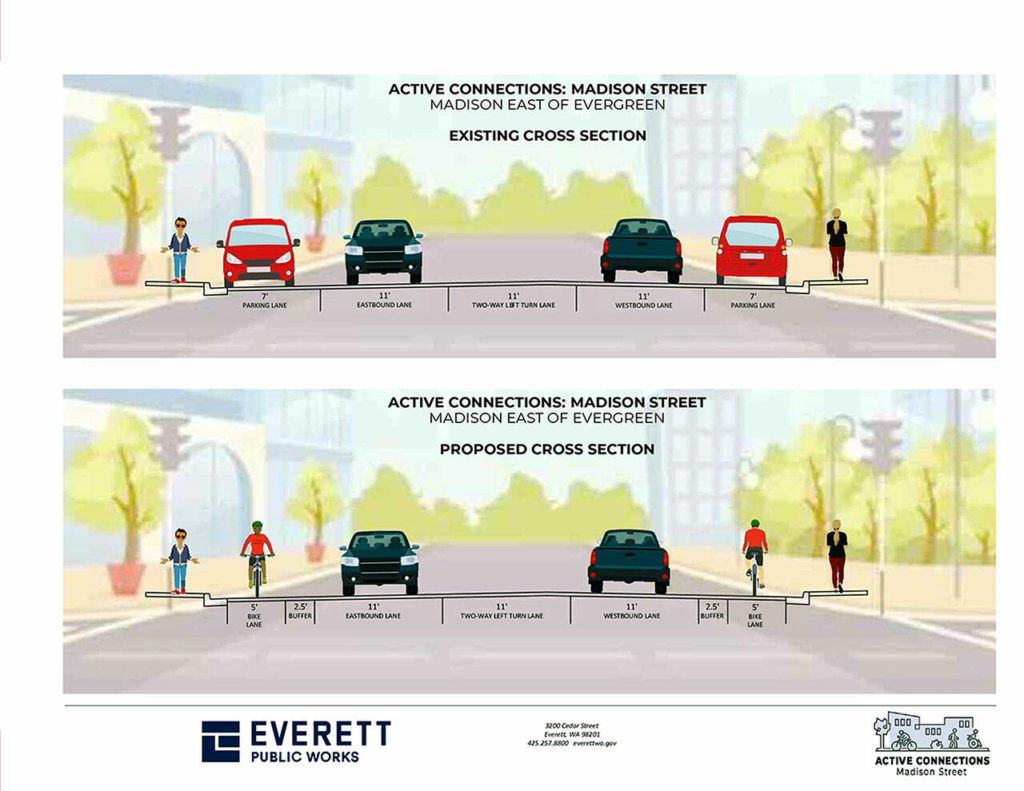EVERETT — Some of Everett’s first buffered bike lanes could replace on-street parking on Madison Street.
First, the city wants to hear what people think about the proposal under consideration as part of next year’s pavement overlay work. People can provide input in an online questionnaire until Monday.
The 1.7-mile segment would be between Commercial Avenue and Gateway Terrace, a small road just east of Sievers Duecy Boulevard.
Buffered bike lanes add distance, and can include physical barriers, between cars and bicycles. City staff say those present a more cost-effective idea on Madison.
“As responsible stewards of public funds, we know this is an opportunity to not only do road maintenance… this gives us an opportunity to do our other plans,” Everett active transportation planner Christina Anna Curtis said.
Everett has a mix of bike infrastructure.
Interurban Trail is a multi-use path separated from vehicles that runs north and south near Interstate 5. Several streets are shared by cyclists and motorists, such as Hoyt Avenue. Others have bike lanes along the shoulder next to vehicle lanes, such as Casino Road.
Protected bike lanes physically separated from vehicles by bollards, parking, or planter and tree medians are considered the safest option.
Every year Everett spends around $3 million on pavement overlay to repair and resurface select roads. Work includes grinding out the existing road, rebuilding it, then restriping the lanes, parking and other markings.
Everett Public Works staff also look at the Everett Bicycle Master Plan, a planning document that guides city investment, to couple with some projects.
The bike plan actually calls for reconstruction of Madison Street to include bike lanes in addition to parking. But that would require a major overhaul of the roadway or property acquisition to expand the right-of-way. Both of those options are costly and outside the city’s current budget.
In prior projects, the city has used existing roadway width to add bike lanes.
Madison is different because it would instead swap out parking for bike lanes as part of the overlay work.
“This is sort of a test case for us,” city engineer Tom Hood said.
The city proposes replacing on-street parking with 5-foot-wide bike lanes separated by 2.5 feet from the vehicle lane. It’s enough room for one cyclist in the lane at a time. At least 8 feet are required for two cyclists next to each other in design standards, Curtis said.
Design hasn’t started beyond early sketches to visualize the proposal. But crews likely will use a plastic material on the road, instead of just paint, to provide texture that alerts drivers and riders when they veer into it, Hood said.
Vertical posts or bollards could be installed for further separation between motorists and cyclists. But “harder” protection like curb median segments is unlikely because it is bound by the overlay budget.
Tyler Rourke, chairman of the city’s Transportation Advisory Committee and a bike commuter, has chastised Everett’s lack of protected bike lanes. If people can get around safely on a bike, he thinks it would reduce vehicles and greenhouse gas emissions that contribute to climate change.
If built, 5-foot bike lanes on each side of Madison Street would connect the Interurban Trail with planned bike lanes leading toward the Boeing complex and Paine Field.
“Thousands of people go there every day and we consistently get feedback they would like active transportation options to get there,” Curtis said.
Currently that stretch of Madison Street has vehicle lanes east and west, a center turn lane and parallel parking on both sides. It has turn lanes at intersections with Colby Avenue, Evergreen Way, and Sievers Duecy Boulevard.
Residences line most of Madison, with some commercial lots.
Speed limits are between 30 and 35 mph on Madison, similar to other arterials. Studies have shown higher speeds when a driver hits a pedestrian lead to more fatalities and serious injuries.
Everett’s conducting a citywide speed limit study to determine if any need to change, which the city council would approve.
“It’s not likely Madison will get a lower posted speed,” Hood said. “We also find often that lowering the posted speed doesn’t necessarily change driver behavior.”
Curtis and Hood said they’ve heard claims that people don’t bike on Madison Street now, so bike lanes are unnecessary. But city infrastructure is built and changed for future use, similar to not constructing a bridge based on the number of people swimming across the water.
“We know that when we build it, people use it,” Curtis said.
Providing non-motorized transportation options throughout the city is a facet of Everett’s climate action plans.
Ben Watanabe: bwatanabe@heraldnet.com; 425-339-3037; Twitter @benwatanabe.
Talk to us
> Give us your news tips.
> Send us a letter to the editor.
> More Herald contact information.




























